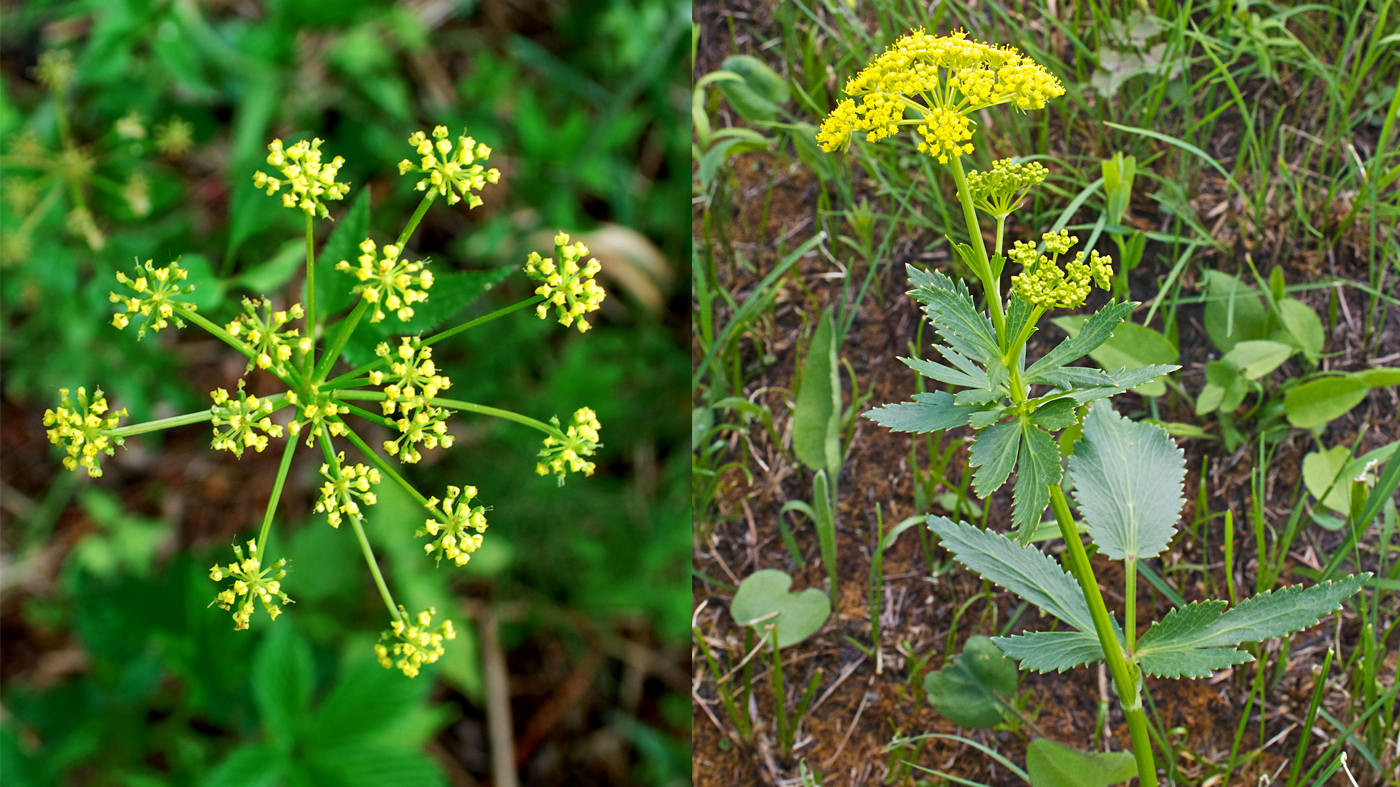Pastinaca sativa
This poisonous weed is most commonly found in roadside ditches and prairie areas—not in cultivated yards and gardens. Looking similar to Golden Alexander (Zizia aurea) or a yellow version of Queen Anne's lace (Daucus carota), wild parsnip blooms later in the season, has deeply forked leaves, and has more leaflets in each compound leaf.

Wild parsnip (Pastinaca sativa) bloom closeup. Wild parsnip (Pastinaca sativa) plant in situ
Chemicals in the sap of the parsnip react with sunlight and cause phytophotodermatitis—a breakdown of cells and tissues when the sap on the skin is exposed to sunlight. The resulting rash is a severe chemical burn which takes many weeks to heal and may leave long-lasting scarring. It is not recommended that homeowners attempt to remove the plant themselves.
A small number of wild parsnips have been seen in the Dixon Prairie and along the Skokie River, and the Garden is taking steps to eradicate the plants.
This is certainly a plant of concern, but it should not be a reason to panic. Learn how to identify wild parsnip with this brochure from the Minnesota Department of Transportation: dot.state.mn.us/adopt/documents/wild-parsnips.pdf.
According to Chicago Botanic Garden ecologist Joan O'Shaughnessy, the wild parsnip can be found at the Garden in the Dixon Prairie and along the Skokie River. "The total number of plants we managed this year was not more than 50," O'Shaughnessy explains. "We’ve used two techniques for dealing with it—pulling, and cutting. The preferred [and considerably safer] technique is pulling it after it has bloomed. The long tap root comes out with a bit of effort at this time." When visiting the Dixon Prairie, we recommend remaining on the cultivated paths.
For additional information about identification and removal of wild parsnip, as well as current herbicide recommendations, please contact Plant Information Services at (847) 835-0972 or email.

